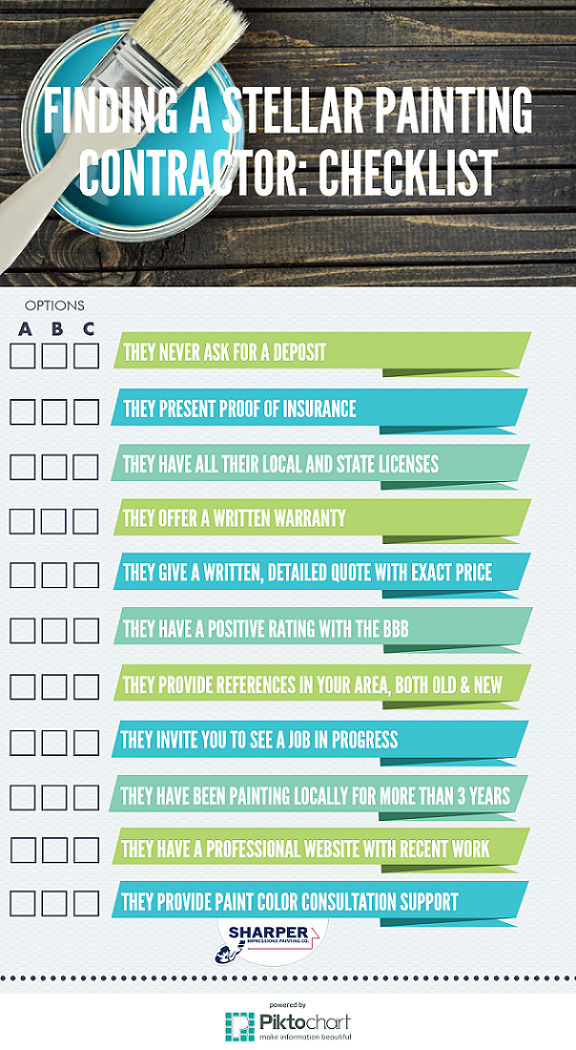Step-By-Step Overview To Readying Your Wall Surfaces For Painting
Step-By-Step Overview To Readying Your Wall Surfaces For Painting
Blog Article
Web Content Develop By-Hickey Bland
When you're prepping your wall surfaces for paint, it's vital to follow a methodical process to guarantee a remarkable coating. Beginning by analyzing the wall surface for any type of damage; this action can make or damage your job. Once you have actually determined any issues, cleaning the surface appropriately is crucial, as an unclean wall surface can influence paint bond. Afterwards, you'll need to patch any kind of imperfections and use a primer. Yet there specify methods and ideas that can elevate your prep work game-- allow's check out those further to achieve the very best outcomes.
Assessing Wall Surface Condition
Before you grab your paintbrush, take a minute to examine your walls' condition. Look for any kind of noticeable damage like splits, openings, or peeling off paint. These blemishes can impact how the paint adheres and looks when it's dry. If you observe any kind of considerable damages, you'll need to prioritize repair work prior to diving into painting.
Look very closely at the texture of your wall surfaces. Is painters companies , or exists appearance that might call for unique factor to consider? Smooth wall surfaces typically call for less prep, while distinctive surface areas might require even more time to repaint uniformly.
Likewise, consider the previous paint task. If the old paint is shiny, it mightn't permit brand-new paint to stick appropriately. You'll need to know if your wall surfaces have been repainted with oil-based or water-based paint, as this can impact your choice of guide or paint.
Ultimately, remember of any type of dampness issues. If you see indications of water damages or mold, address these problems instantly to avoid additional issues.
Cleaning the Surface area
As soon as you've examined the problem of your walls, the next step is cleaning up the surface. Begin by gathering your materials: a container, cozy water, a mild cleaning agent, a sponge or cloth, and a scrub brush for tougher areas.
Begin at the top edge of the wall surface and function your way down. https://smalljobpaintersnearme83726.blogsidea.com/39610409/top-5-mistakes-companies-make-when-finding-exterior-paint-color-styles-and-how-to-stay-clear-of-them cleaning agent with cozy water in your pail, after that dip the sponge or towel into the solution. Wring it bent on avoid extreme wetness on the walls.
As you clean, pay attention to locations that may've gathered dust, grease, or fingerprints. For persistent stains, make use of the scrub brush delicately to avoid harming the paint below. Wash your sponge or fabric often in clean water to avoid spreading dirt around.
After cleaning, it's necessary to clean the wall surfaces with a wet towel to get rid of any soap deposit. This step makes certain a smooth surface for the new paint to stick to.
Allow https://professional-painters-nea88754.newbigblog.com/39381702/the-best-times-to-arrange-your-industrial-paint to completely dry completely prior to moving on to the next preparation actions. This extensive cleansing process will help create a fresh canvas for your paint project, guaranteeing the most effective results.
Patching and Priming
Patching and priming are vital action in preparing your walls for a fresh coat of paint. First, check your walls for any openings, cracks, or flaws. Use a high-quality spackling compound or patching paste to fill these areas.
Apply the substance with a putty blade, smoothing it out so it's flush with the surrounding surface. Permit it to completely dry completely, and afterwards sand it lightly until it's smooth and also.
As soon as you have actually patched every little thing, it's time to prime. Primer assists secure the patched locations, guaranteeing the paint sticks properly and provides a consistent surface. Choose a guide suitable for your wall surface type and the paint you'll be using.
Use the guide using a roller for bigger locations and a brush for corners and edges. If your covered locations are substantially large or porous, you could want to use a 2nd layer of guide after the initial one dries out.
After priming, allowed whatever dry completely prior to proceeding to paint. This prep work will not just improve the appearance of your walls however additionally prolong the life of your paint work.
Take your time, and you'll be pleased with the outcomes.
https://www.housedigest.com/939222/tips-for-painting-the-exterior-of-your-home-like-a-pro/
By following these easy actions, you can attain a smooth and specialist coating on your walls. Start by analyzing their condition, after that tidy and patch any kind of blemishes prior to using primer. Bear in mind to allow appropriate drying out time and guarantee whatever is smooth before you dive into painting. With the right prep work, you'll establish the stage for a beautiful makeover in your space. Now, collect your supplies, breathe in the fresh air, and get ready to repaint!
